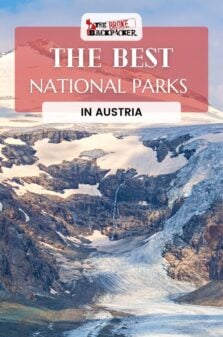Nestled inland between Southern and Central Europe, Austria is home to some of the most exquisite landscapes in Europe. Best known for its alpine winter activities and elegant cities, the country is a predominantly mountainous location.
Austria is divided into the Alps, the Pannonian Plain, the Bohemian Forest, and the River Danube, the second longest river on the continent and an essential water source for the alpine countryside.
Home to giant forests, rumbling waterfalls, winding rivers, high-alpine peaks, and rolling countryside hills, Austria offers various landscapes and terrains in addition to some of Europe’s most loved cities.
Austrians take great pride in the natural treasures in their country, and the only way to get a real sense of this country’s outdoor beauty is to visit a few national parks in Austria.
European cities are some of the most beautiful in the world, but there truly is something special about exploring and experiencing the natural wonders of a new country. In this article, I’ll unpack eleven of the country’s best national parks, nature parks, biological reserves, and protected areas, detailing the best activities to do in each park and where to stay when you visit.
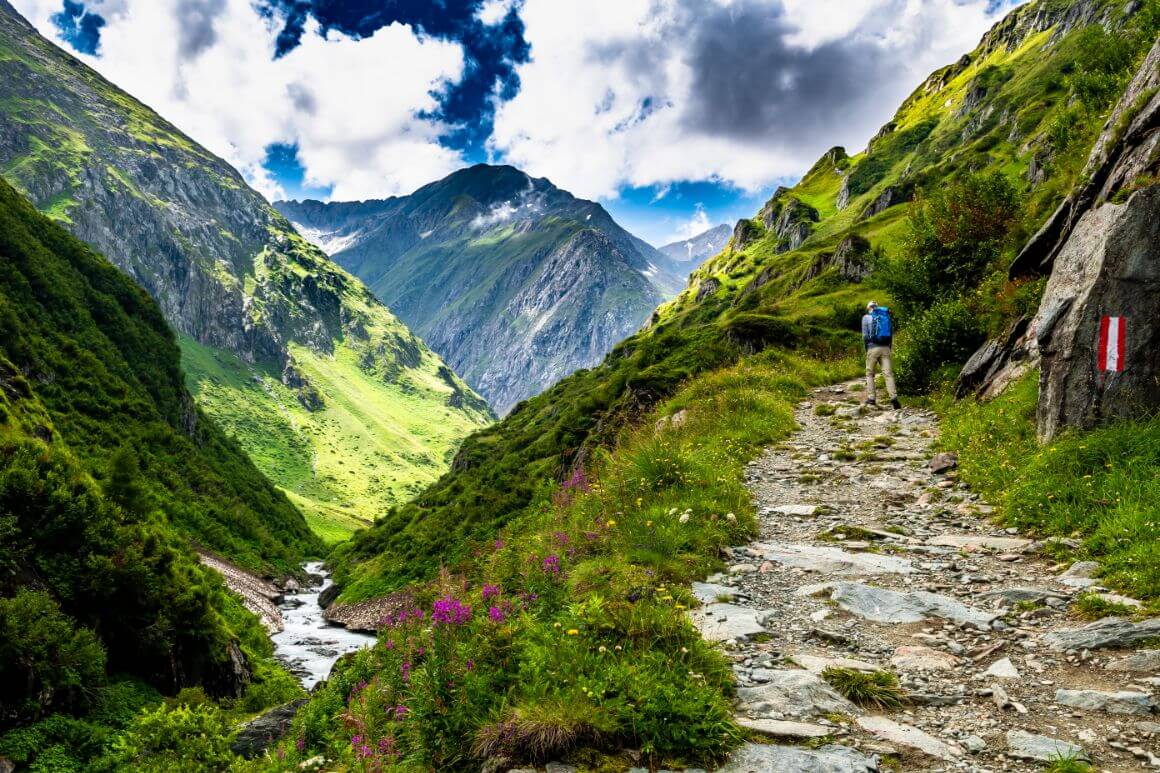
What are National Parks?
A country of contrasts, the Styrian region of Austria is dotted with vineyards and wineries, while the Eisriesenwelt houses the largest ice caves in the world. Golling an der Salzach boasts impressive waterfalls and natural pools, while the Bregenz Forest showcases some of the best alpine scenery in Europe.
The country is also home to the largest glacier in the eastern Alps. All in all, it’s a natural wonderland with enough to keep even the most active adventurer busy for months on end.
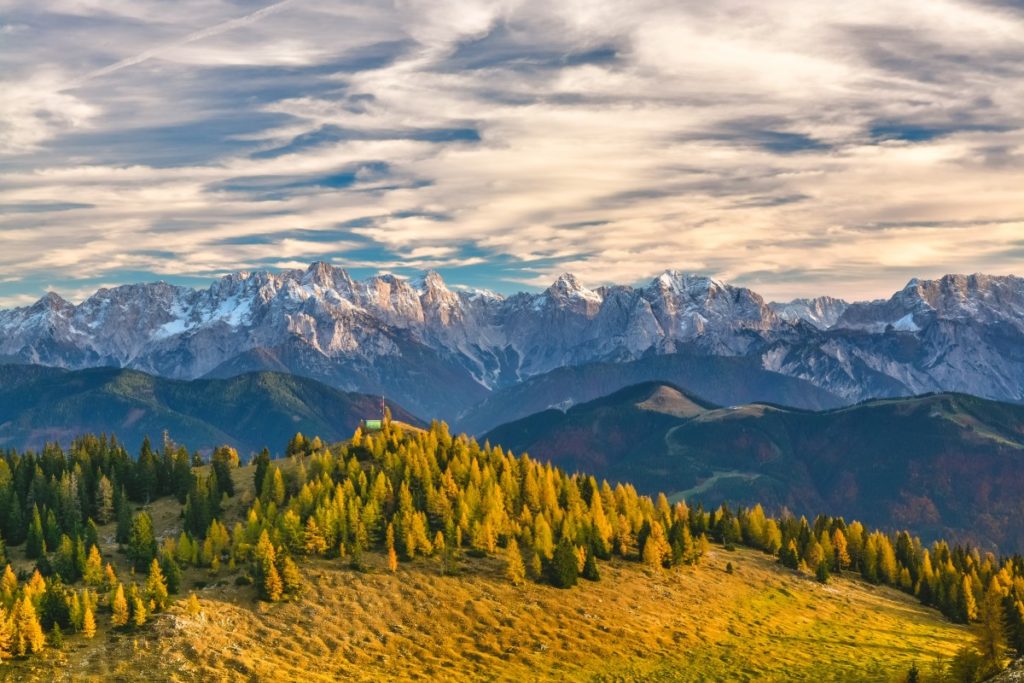
Hiking in Austria in and amongst its natural parks in addition to a whole bunch of other activities is so elite because Austrians take good care of their natural surroundings. They protect and preserve significant landscapes for visitors and the next generations to enjoy. Almost half of this lush green country is covered by trees, providing ideal conditions for flora and fauna to thrive.
In an effort to protect its natural resources, around 48% of the country is under special protection. It takes a lot of time, resources, and effort to care for this unique landscape and the biodiverse species that live within it.
Austria’s park system is divided into four categories:
- A national park is defined as a space set aside for ecosystem preservation and recreational enjoyment.
- A nature park protects cultural landscapes and intends to gain a deeper understanding of nature conservation. These parks might also be used for agricultural or recreational purposes.
- A biosphere reserve is a UNESCO-defined park where the ecosystems in the landscape are treated sustainably.
- A wilderness area is an area of land that allows for no human intervention, providing a safe habitat for animal and plant species to thrive in.
National Parks in Austria
Giant granite cliffs, snow-covered Alps, meandering rivers, and glistening lakes offer a taste of the natural beauty found in Austria’s national parks.
Continue reading to learn more about eleven of the country’s best parks and reserves and why you should add them to your adventurous bucket list.
Hohe Tauern National Park
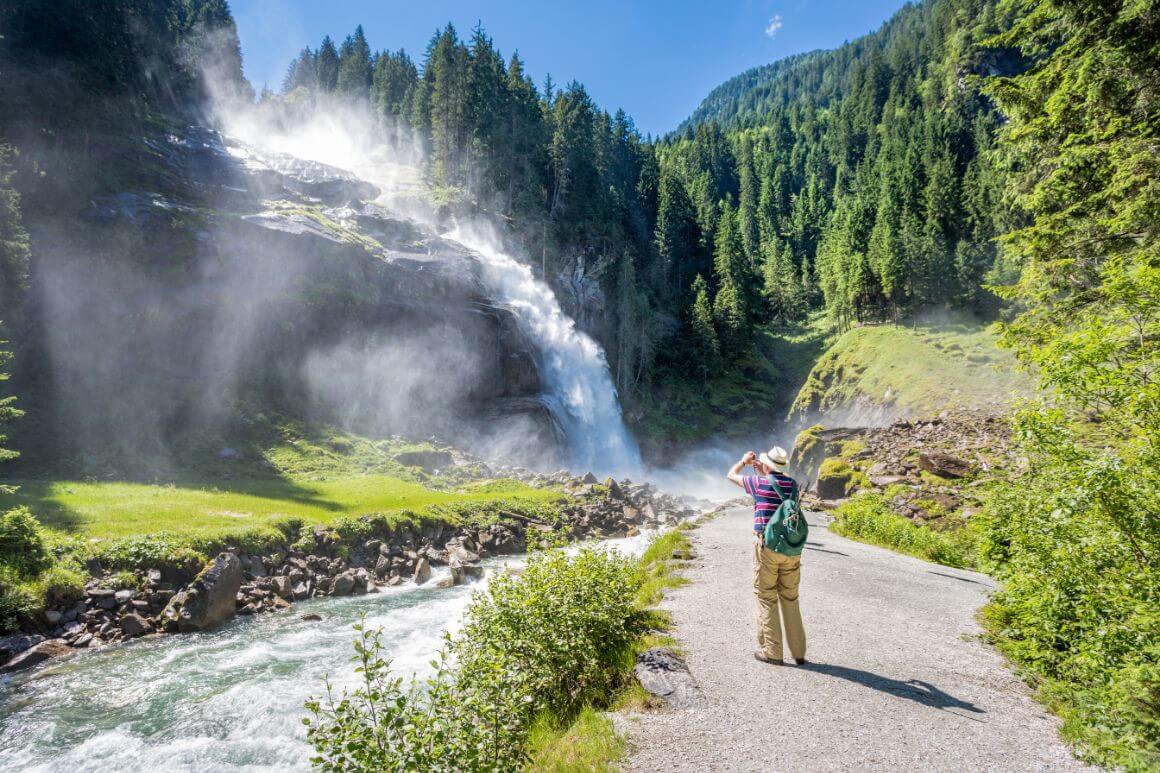
- Size: 1856 sq mi
- Location: In the Salzburg, Carinthia, and East Tirol regions near Matrei in Osttirol
- Entrance Fee: Between €5-10 per person or €13-20 per vehicle
Extending 1856 square miles across three regions in Austria, Hohe Tauern National Park is the largest protected area in the Alps. The park was founded in 1984 and is Austria’s oldest national park.
It’s one of the world’s most spectacular high mountain landscapes, offering everything from lush valleys to pine forests, alpine peaks, and some of the world’s best cascading waterfalls.
With year-round rain and a cool climate, flowers, evergreens, and shrubbery flourish in the park. Hohe Tauern is also home to an incredible variety of over 15000 wildlife species originating in Central Asia, the Arctic, and Southern Europe.
As a matter of fact, half of all animal species in the country can be found in this park, from golden eagles to marmots and chamois.
The massive protected area includes the Weissee Glacier World and Pasterze Glacier, which is Austrias largest glacier. This arrangement of glaciers reaches nearly ten thousand feet above sea level. It slowly trickles into deep blue alpine lakes, one of the main attractions in this Austrian national park.
The park is also home to one of the tallest waterfalls in Europe, known as Krimml Falls. Crashing 1263 feet in a cascading curtain of wonder, some even believe the water to have special healing powers. These waterfalls and the glaciers can be visited with a guide and make for a spectacular day trip.
Where to Stay near Hohe Tauern National Park:
A short drive from Matrei in Osttirol in Kaprun, Salzburg, this traditional Austrian alpine cottage overlooks views of the glacier.
Recently renovated to combine modern fittings with authentic alpine interiors, the home has four bedrooms. It offers a minimalistic yet cosy accommodation near the Hohe Tauern National Park.
Thayatal National Park
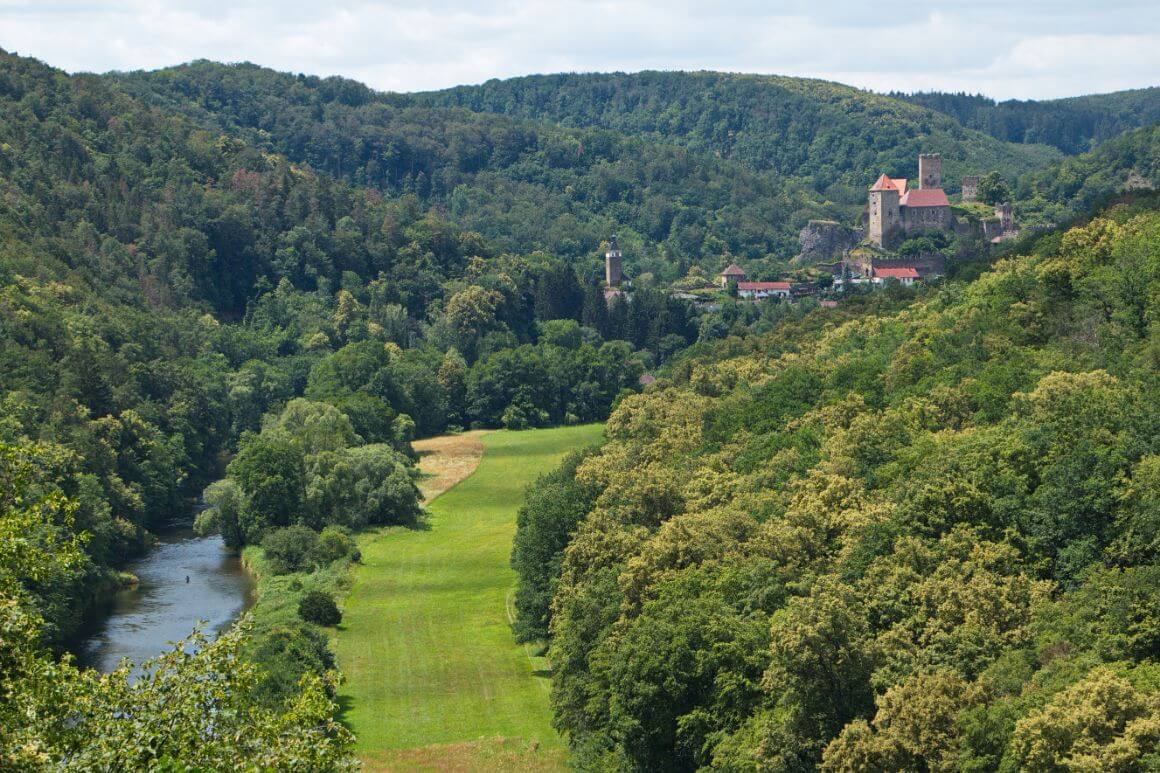
- Size: 19 sq mi
- Location: In Lower (northern) Austria near Hardegg
- Entrance Fee: Between €3-5 per person or €5-7 per vehicle
Located in Northern Austria along the Austria-Czech border is Thayatal National Park. Along with the Narodni Park Podyji in Czech, it protects one of the most biodiverse areas on the continent (despite being Austria’s smallest national park).
From forest wilderness to rushing rivers, this High North park is home to incredibly elusive and endangered wildlife, including the European wildcat and black storks.
The park comprises 92% forest, 4% meadows, 3% water, and 1% dry grassland, home to around 44% of Austria’s native flora. To put this into perspective, almost half of the natural plants that grow in Austria are located in around 0.016% of the country’s total area.
One of the best things to do in this national park in Austria is to explore the trails in the Thaya Valley forests and meadows. They meander through exquisite landscapes overlooking jaw-dropping views. The Uberstieg viewpoint is one of the best places to marvel at the Umlaufberg mountains and is a hotspot on the Thaya Trail.
This park is an exceptional hiking destination, covered with lush vegetation year-round with blossoming wildflower carpets during spring and summer. Down in the Kajabachtal Valley, you could wander through lush mountain pathways and try to spot rare river crayfish and fire salamanders in the calm Kajabach stream.
Where to Stay near Thayatal National Park:
Surrounded by nature with panoramic countryside views, this modern cabin is an oasis in the small village of Hotzeldorf near the national park. It boasts a sunny garden that extends into neverending fields that change colour with the seasons.
Perfect for an adventurous vacation or a wellness retreat, the cabin features a cosy living room with a fireplace, a glass-walled sauna, and three full bedrooms.

We’ve tested countless backpacks over the years, but there’s one that has always been the best and remains the best buy for adventurers: the broke backpacker-approved Osprey Aether and Ariel series.
Want more deetz on why these packs are so damn perfect? Then read our comprehensive review for the inside scoop!
View on Osprey View on REIKalkalpen National Park
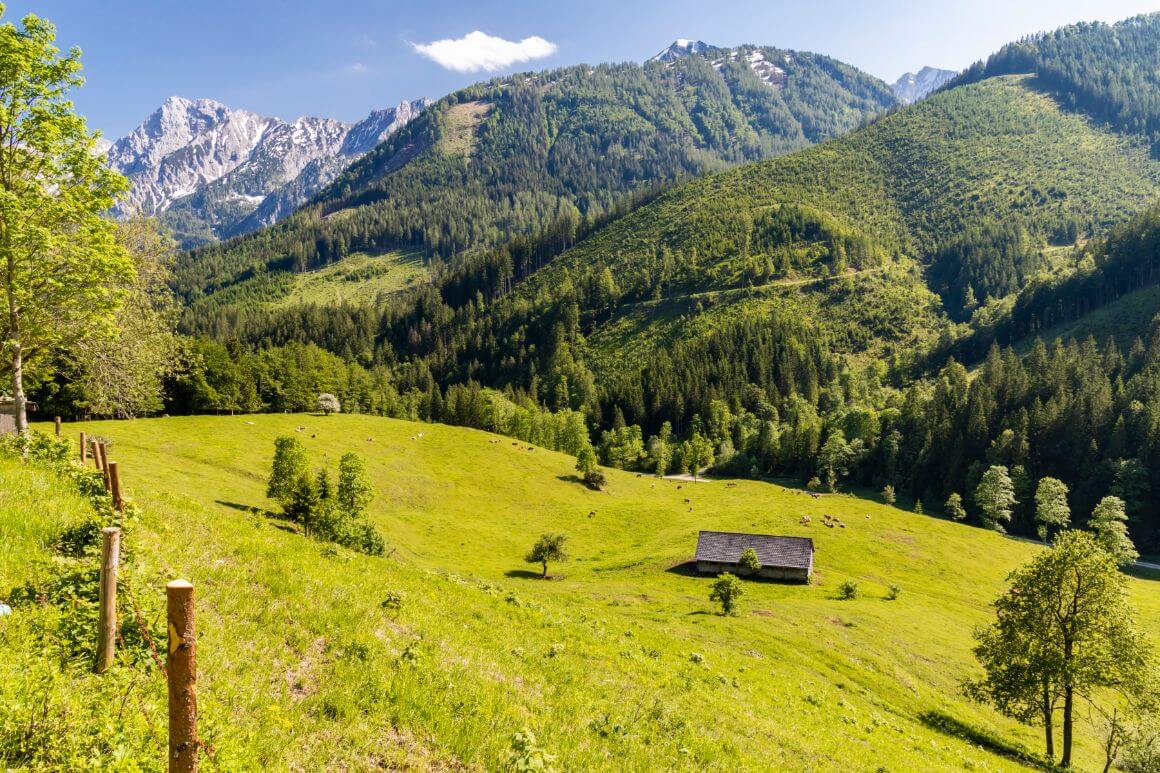
- Size: 212 sq mi
- Location: In the Upper Austria and Styria regions near the town of Windischgarsten
- Entrance Fee: Between €4-8 per person or €8-12 per vehicle
Known by locals as The Sea of Trees, Kalkalpen National Park is the largest forest wilderness in the country. The Park stretches over 200 square miles across the Sengsen and Reichraminger Hintergebirge mountains.
81% of this park consists of forest, with the remaining landscape including mountain pines, alpine pastures, meadows, and rocks. The park was founded in 1997 and was designated Austria’s first-ever World Heritage Site. This UNESCO title was approved partly because the park is home to the only lynx population in the Austrian Alps.
Ideal for hikers and mountain bikers, this expansive forest wilderness offers tons of trails and viewpoints to explore, whether with a ranger or not. The Great Canyon at the Reichraminger Hintergebirge mountain range offers spectacular views of the canyon bends carved into the dolomite rocks over centuries.
At the bottom of the Hoher Nock mountains, the stunning Feichtau mountain pasture includes turquoise alpine lakes. Part of the reason this area of the national park in Austria is so idyllic is that there are no path access points to get here. This means you will have to trek through non-demarcated trails to access this natural gem.
Where to Stay near Kalkalpen National Park:
This old wooden suite in the Kalkalpen National Park is perfect for two guests. It offers a peaceful space just an hour’s drive from the local Hinterstoder Ski Area and the Bad Hall Thermal Spa.
It’s surrounded by nature hikes and bike tracks and includes a luxurious glass-walled sauna to unwind in after an active day out in the park.
Neusiedler See National Park
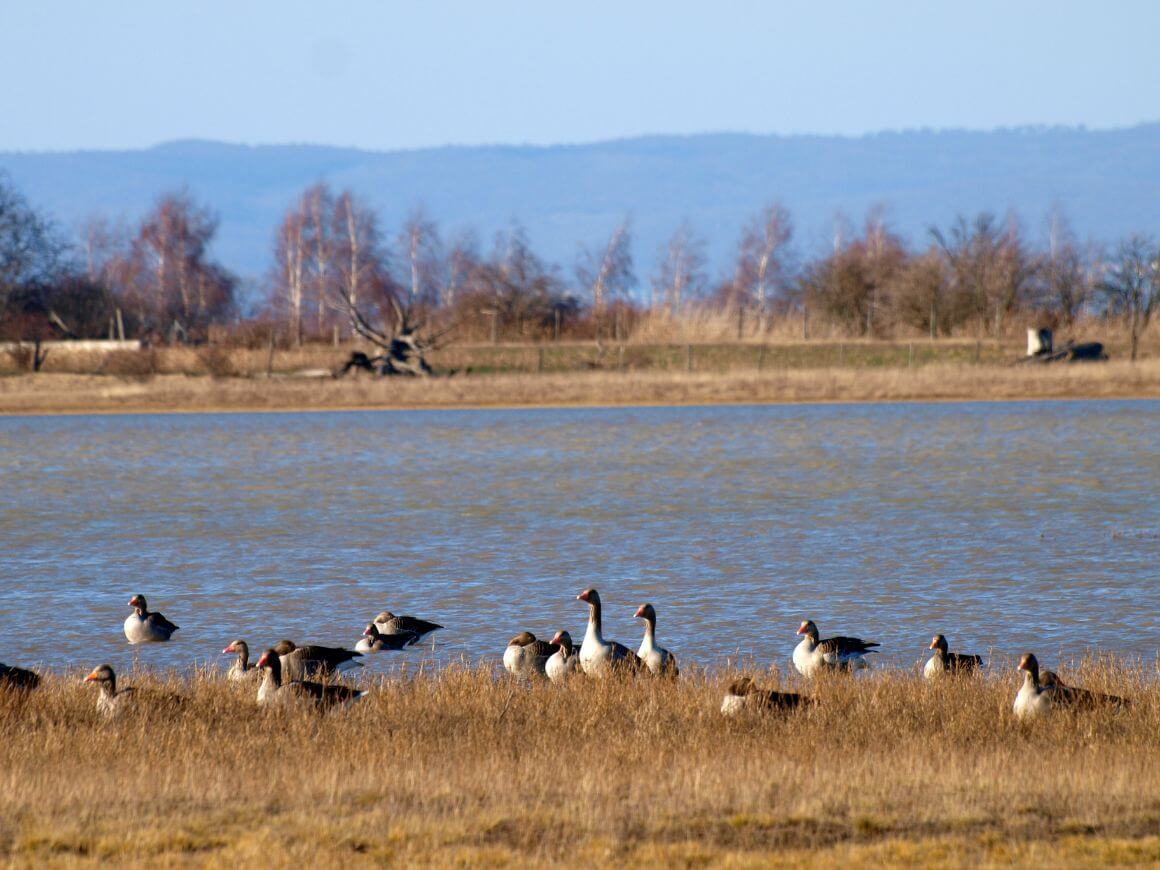
- Size: 146 sq mi
- Location: In the Burgenland region near the town of Illmitz
- Entrance Fee: Between €3-6 per person or €5-9 per vehicle
Offering one of the best landscapes for birdwatching in Europe, birdwatchers flock from across the world to gaze across the stunning waters of Neusiedler See National Park.
The park is located in Eastern Austria in Burgenland and protects the most western lake of the Eurasian Steppe. Its location between some of the great European nations has made it a historical buffer zone for centuries.
The park was established as a protected area in 1994 when it was recognised that the area provided an essential ecological meeting point for flora and flora. In this small area, you could spot plants and animals who travelled across Europe and even from as far as Asia.
The area includes a variety of terrains, including wetlands, meadows, salt marshes, and sand steppes, each providing habitat for different animal and plant species.
Most of the park consists of reeds, lakes, pools, and wetlands, with only 30% categorized as meadows that can be explored on foot.
As mentioned, most visit this national park in Austria for its incredible variety of birds. As Austria’s only protected steppe landscape, Neusiedler See is an essential stop for migrating birds moving between their breeding ground and winter refuge.
The observation tower at Sandeck overlooks a massive reed belt and is one of the best places to spot local wildlife. Other than bird watching, visitors can enjoy canoe trips, tours on solar-powered boats, and even cycling adventures through the meadows.
Where to Stay near Neusiedler See National Park:
On the edge of the national park in Illmitz is Zimmerei – Landgasthaus Karlo. It is a gorgeous modern guest cottage with a seasonal pool, garden, and a terrace with mountain views.
Private parking is available on the property. Although this guesthouse doesn’t offer self-catering facilities, a delicious continental or vegetarian breakfast is prepared each morning.
Gesause National Park
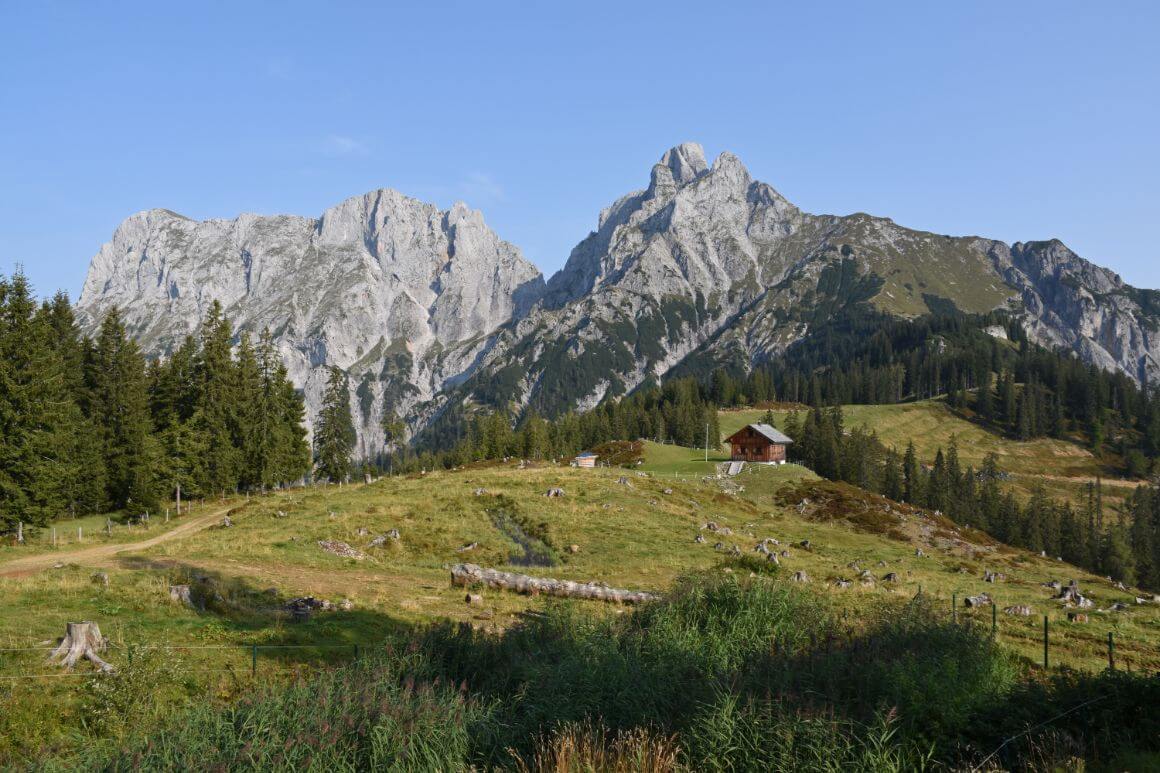
- Size: 97 sq mi
- Location: In the Styria region near Admont
- Entrance Fee: Between €6-10 per person or €11-15 per vehicle
Characterised by its steep cliffs and wild rushing rivers, the Gesause National Park is best known for the Enns River that flows through it and the limestone mountains that surround it. Over half of the park is made up of forest, along with plenty of alpine pastures and mountain shrubbery.
The landscape is home to over 200 endemic species, making it one of the most biodiverse parks in the country. With its spectacular natural scenery and wildlife, it should come as no surprise that Gesause is a hotspot for nature photography.
Although a largely inaccessible landscape, the park is a popular place for hiking and climbing, as well as summer watersports and ski touring during winter. If you’re looking for a place to marvel at incredible alpine scenery while also getting a load of exercise, Gesause National Park in Austria has you covered.
The Wilder John adventure trail follows along the Johnsbach stream and creek and is a short and easy hike for beginners that can be enjoyed with the whole family. The loop starts and ends at the Weidendom parking lot and is open from May through October.
For a (much) more intense adventure, Planspitze Mountain extends across a harsh landscape of cliffs and limestone rocks; offering opportunities for only advanced mountaineers and hikers to tackle. Those who don’t feel up to the challenge can explore the foothills of the mountain in the National Park Pavilion at Gstatterboden.
Where to Stay near Gesause National Park:
Enjoy expansive mountain views from the comfort of your bed at this penthouse-like cabin apartment in Dietmannsdorf bei Trieben.
You’ll have access to a full kitchen and a well-working Wi-Fi connection, as well as parking on the premises. Best of all, you will be just a short car drive away from the Gesause National Park.
Donau Auen National Park
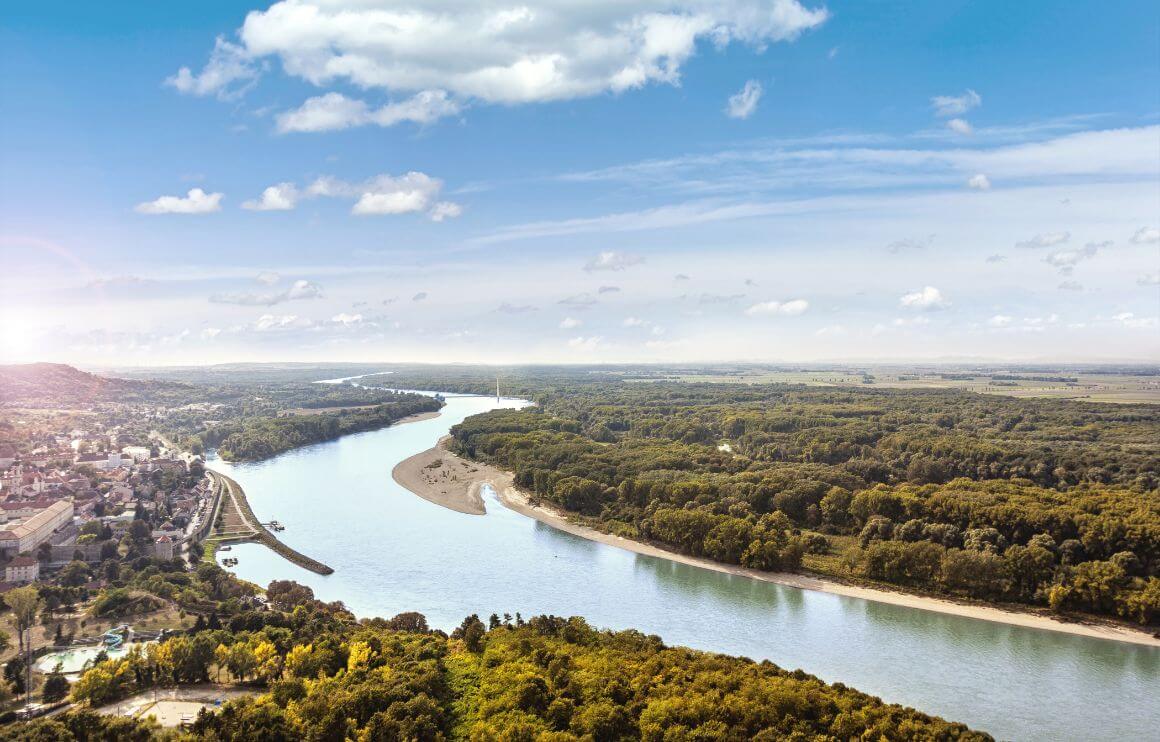
- Size: 114 sq mi
- Location: In the lower Austria and Vienna region near Orth an der Donau
- Entrance Fee: Between €3-6 per person or €5-9 per vehicle
Located between Austria’s capital city of Vienna and Slovakia’s capital of Bratislava, in east Austria is Donau Auen National Park. This park was founded to preserve the last great floodplain in Central Europe. The park’s name translates to ‘river island’ or ‘wetland,’ which is exactly what this park is.
Donau Auen sits along the Danube River, Europe’s second-longest river and a massive lifeline for various animal and plant species, including human residents in the area. Some sections of the Danube that flow through the park are, in fact, the last free-flowing stretches of the river in the country.
The park is a haven for outdoor enthusiasts, offering some of the best hikes in Austria. There is something to keep every age group satisfied here. Whether you want to join a guided tour or expedition through the alluvial forest, explore the park on a hike, or just meander down the banks of the river.
For a family day out, Schlossinsel Floodplain offers an authentic learning environment of suspension bridges and human-sized bird nests. You can watch animals like snakes, beetles, dragonflies, and kaleidoscope-coloured butterflies flourishing in their natural habitat.
Another one of the best things to do in this national park in Austria is to join a guided boat tour. This allows you to explore the River Danube up close and personal. Choose to paddle your own way in a canoe or take the easier route in a small powerboat for an unforgettable river experience.
Where to Stay near Donau Auen National Park:
Set in a traditional Austrian cottage, this penthouse apartment is a fully self-catering space with a kitchen, dedicated workspace, and spacious shared living area. It has four bedrooms, two with double beds and two with a single bed each, ideal for a family of six.
After a day of adventuring in the national park, guests can relax and barbeque on a stunning shared terrace overlooking neighbouring gardens.

Get 15% OFF when you book through our link — and support the site you love so dearly 😉
Booking.com is quickly becoming our go-to for accommodation. From cheap hostels to stylish homestays and nice hotels, they’ve got it all!
View on Booking.comOther Parks in Austria
Not found the destination that inspires you yet? Don’t fret, here are a few more of Austria’s epic parks for you to discover that’ll get you packing your adventure bag and getting out there!
Unteres Murtal Biosphere Reserve
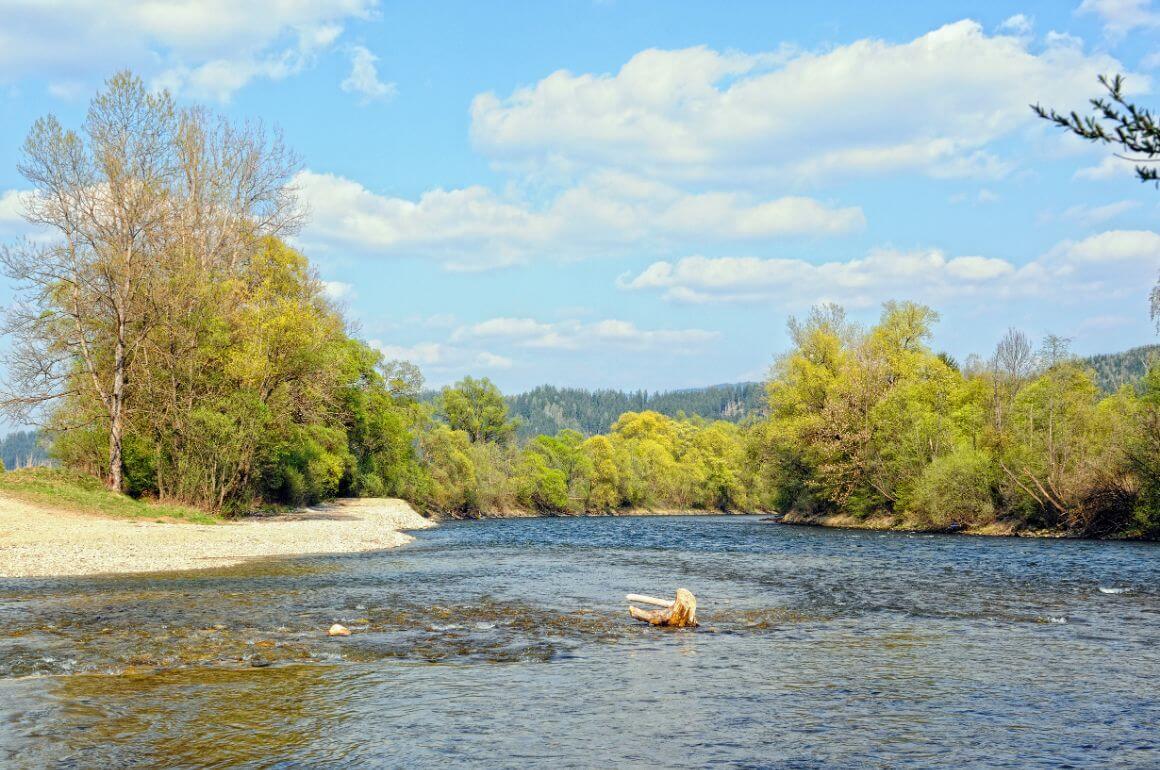
- Size: 50.2 sq mi
- Location: Along the Mura River in Styria, near the town of Graz
- Entrance Fee: Free
Otherwise known as the Lower Mura Valley, Unteres Murtal Biosphere Reserve was founded in 2019 and is Austria’s second-biggest alluvial landscape. It borders the Slovenian Mura River Biosphere Reserve and is a natural and historical hotspot that forms a significant section of the European Green Belt.
Made up of river landscapes and a floodplain forest that surrounds the rushing water, the park is also an area of past volcanic activity, with some rocks in the region dating back 16 million years.
The reserve is shaped by the Mura River, which creates the border between Austria and Slovenia. Around it, there are seemingly endless floodplain forests, swamps, ponds, and wet meadows that offer sanctuary to an incredible variety of water-bound flora and fauna.
Among others, the area is home to over fifty species of fish and a big amphibian and bird population, many of which are endemic to the area and are endangered. Living alongside this wildlife, the reserve also includes human settlements, including Murfeld, Mureck, Halbenrain, and Bad Radkersburg.
The best time to visit this national park in Austria is in spring when the rivers are flowing at their fastest. If you’re up for a unique adventure, visit the great water wheels of the ship mills in Mureck, which have churned the river water for centuries to grind grain harvested from the nearby countryside.
Where to Stay near Unteres Murtal Biosphere Reserve:
Set in a historic wooden alpine cottage with both wooden exteriors and interiors, this home offers an authentic alpine feeling in the city of Graz. The home has four bedrooms, a large living and dining area, and a conservatory space. It’s large enough for ten guests and is ideally located for both exploring the park and the city.
Wienerwald Biosphere Reserve
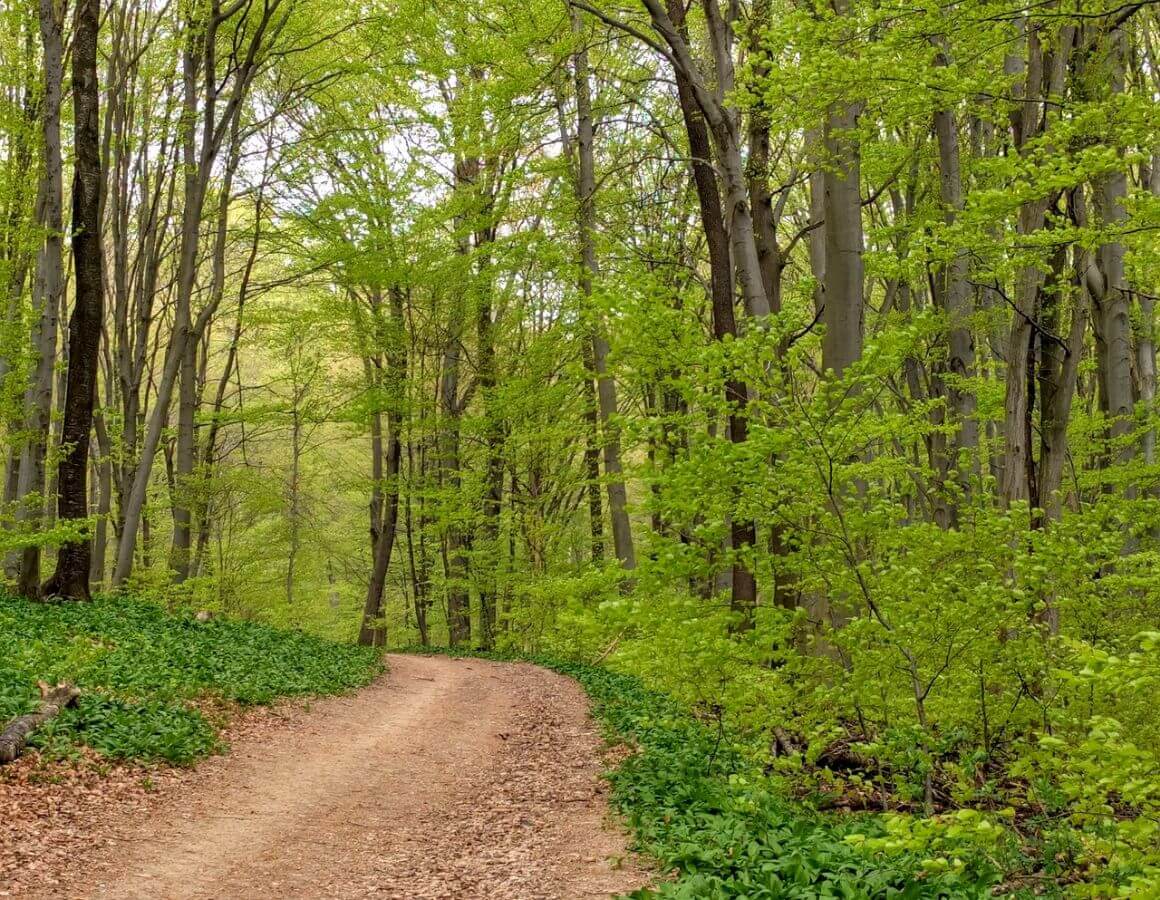
- Size: 405 sq mi
- Location: Covers a part of the Vienna Woodlands in the Lower Austria region, close to Vienna
- Entrance Fee: Free
A region of contrasts, Wienerwald Biosphere Reserve, is located right beside the metropolis of Vienna in northeastern Austria. The park was designated a UNESCO biosphere reserve in 2005 to protect the natural and cultural wonders found in the region.
The park is made up of wooded hills and expansive meadows, which light up like a rainbow of wildflowers during the spring season. There are also pastures, fruit orchards, and vineyards in the park, along with a small area of dry grassland.
The landscape is the product of centuries of human civilisation, which has shaped the agricultural setting into what it is today. Its conveniently close proximity to the capital city makes it a top destination for a day trip from Vienna to escape the bustle of the city.
Along with a flourishing population of wildlife, the national park in Austria is home to around 855 thousand human residents and 50 thousand temporary vacation homes. It covers around 400 square miles of land and extends across 51 Austrian municipalities.
Where to Stay near Wienerwald Biosphere Reserve:
Located in Pressbaum overlooking a pristine pond on the forest’s edge, this cosy cabin is the perfect remote retreat for those seeking respite from busy city life.
The cabin is simple yet convenient, with an attic bedroom and an outdoor kitchen. The sunny home also includes a sauna and a barbeque deck overlooking the pond and forest.
Dobratsch Nature Park
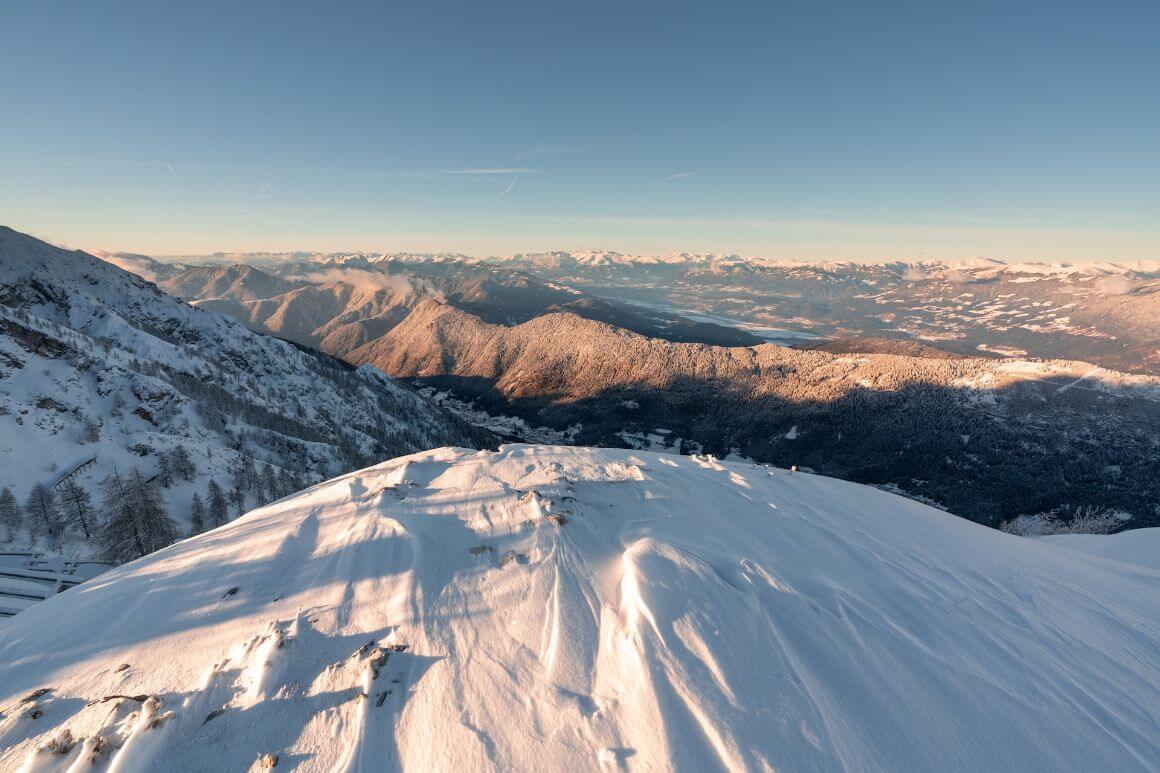
- Size: 76 sq mi
- Location: In the Carinthia region near the village of Villach
- Entrance Fee: Free
The oldest nature park in Austria’s Carinthia region, Dobratsch Nature Park is a recreational mountain reserve close to the town of Villach. There aren’t too many other locations where you can travel between the city and the nature park in just twenty minutes, making this an incredible location for a day trip or weekend away.
It is also known for its historical and cultural significance, having served as a strategic destination for pilgrims and mountain pastoralists for centuries. You can even visit the two highest-altitude churches in Europe in this mountain range.
The most popular activity in the park is hiking, and mountaineers visit from across the continent to tackle the ten-mile trek up the Dobratch mountain. The mountain dominates the landscape like a skyscraper, reaching 7106 feet above sea level and providing the surrounding region with a steady fresh water supply.
There is a range of walks and trails through the area, all well-signposted and well-maintained, showcasing the unique ecology, ancient fossils, and volcanic rock formations along the way. The sensory Alpine Garden is one of the most exciting things to do in this natural park in Austria with children. Here, you can smell, see, and touch over one thousand alpine plants.
The park is a fantastic place to visit in fall and then also transforms into a winter wonderland in the cooler months, offering everything from a ski resort to tobogganing hills to snow hikes and snowshoeing paths.
Where to Stay near Dobratsch Nature Park:
Just south of Villach, close to the Dobratsch National Park, this tiny cabin offers everything you might need for a short visit to the area.
The studio home has a spacious sleeping area with a comfortable bed and a small kitchenette where you can prepare simple meals. Other than being near the national park, it’s close to Faaker See and the many gardens and parks surrounding it.
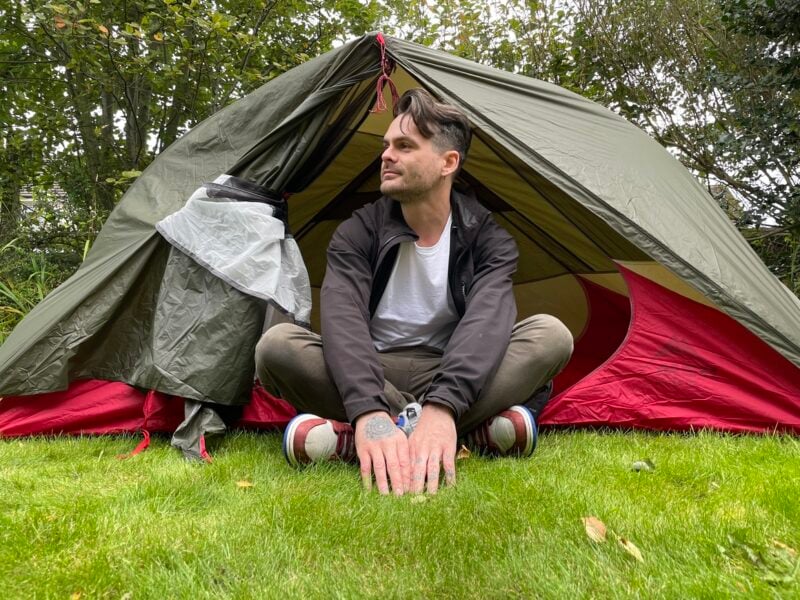
Here at The Broke Backpacker, we love freedom! And there’s no freedom as sweet (and CHEAP) as camping around the world.
We’ve been camping on our adventures for over 10 years, so take it from us: the MSR HUBBA HUBBA is the best damn tent for adventuring…
View on REI Read Our ReviewZillertal Alps Nature Park
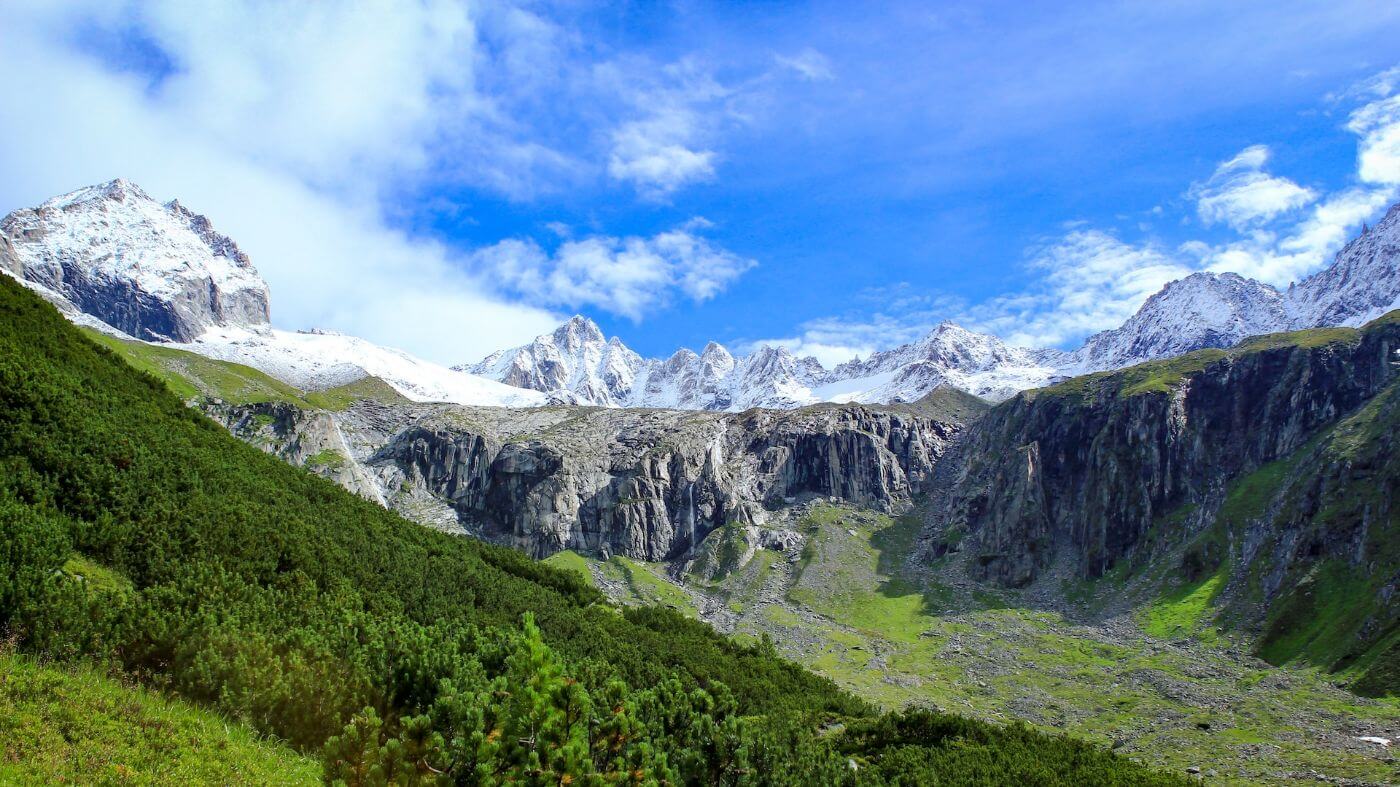
- Size: 163 sq mi
- Location: In West Austria on the Italy-Austria border, close to Mayrhofen
- Entrance Fee: Free
One of Austria’s most famous high-alpine nature parks, the Zillertal Main Ridge, has been under the government’s protection since 1991.
Steep cliff faces, icy glaciers, and snow-capped mountain peaks characterize this park. It extends around 163 square miles across Western Austria from the mountaineering village of Ginzling to the Hochfeiler. In fact, this park has just been extended to protect a further 16 square miles.
With peaks reaching 11500 feet above sea level, the nature park is on the bucket list of many advanced hikers and mountaineers. To preserve the natural beauty and keep it from human intervention, this remote landscape forbids the use of helicopters and cars, as well as the development of road infrastructure.
This means that the only way to access the highest summits and most remote regions of the park is by foot. Hiking through the region is no easy task, and exploring the numerous peaks can take seven days.
Within the Zillertal Alps Nature Park, there are eight mountain huts where hikers can spend a night. Surrounded by nothing but nature, these unique accommodations are an experience in themselves through all four seasons.
Besides hiking and climbing adventures, the park is known for its incredible biodiversity ranging from low-alpine to high-alpine flora and fauna. On a trek through the wilderness, you might spot stags, red deer, marmots, and chamois roaming free in this national park in Austria.
Where to Stay near the Zillertal Alps Nature Park:
Overlooking the Hoeberrbach and Zillertal Alps from a raised position, this mountain chalet is completely removed from the hustle of city life.
The historic building has been fully renovated to sleep up to seven guests, with space to cook, grill, and lounge about on the sunny terrace together. The home is a perfect example of a traditional alpine chalet, with warm wooden interiors and an authentic stove burner from a distant era.
Karwendel Nature Park
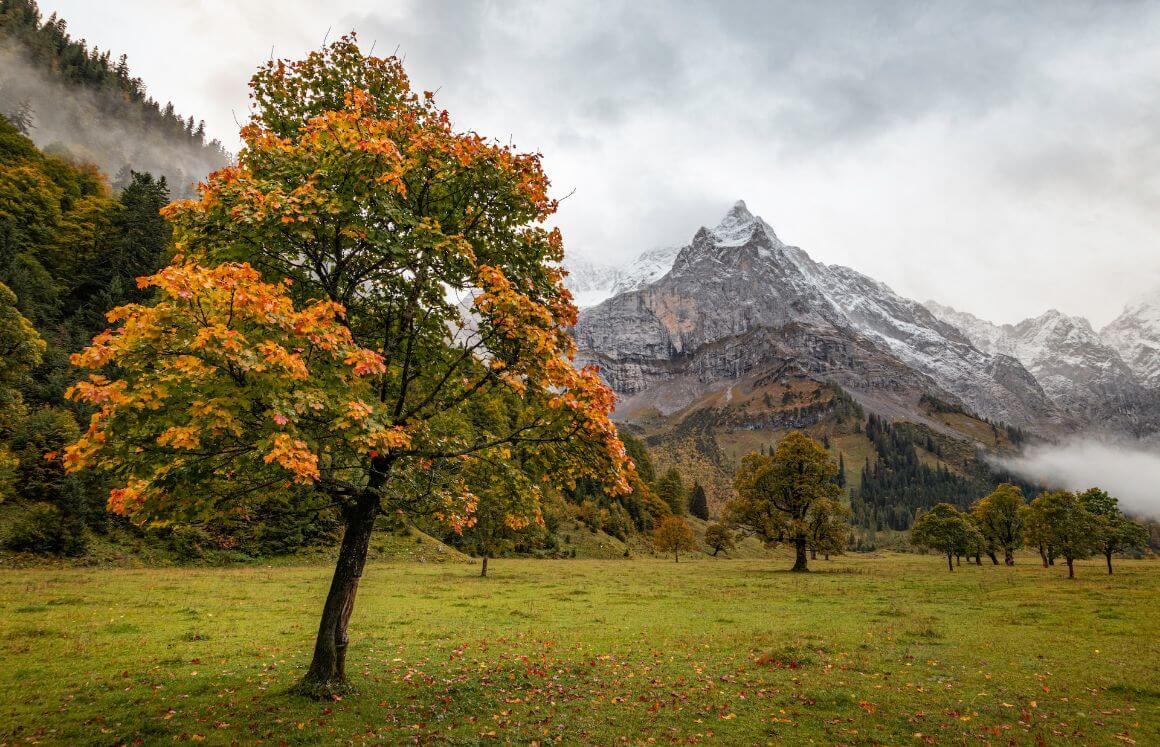
- Size: 280 sq mi
- Location: In Tirol, near Innsbruck, Pertisau and Aachenkirch
- Entrance Fee: Free
Covering almost all of the Karwendel Mountains, this park is located on the border between Germany’s Bavaria and Austria’s Tirol region and is the largest nature park in Austria. The park extends from Innsbruck to Lake Achensee, with a landscape dominated by wild rivers and sycamore forests.
Human history in the park dates back 150 years as a popular hunting and forestry zone. Today, the park protects a network of eleven separate areas, each of which can be explored by joining a ranger-guided tour or a self-guided hike.
The tallest peak in the park reaches over 9000 feet above sea level. Known as Birkkarspitze, this peak is a popular attraction for advanced hikers who travel across the world to climb the iconic limestone alpine peaks.
One of the best things to do in this national park in Austria is visit the Ahornboden in the Risstal Valley, which is known for being home to the largest sycamore forest in Europe. You could spot red deer, sandpipers, and even an Alpine newt on a hike through this densely forested area.
Where to Stay near Karwendel Nature Park:
This modern apartment has been recently designed with contemporary countryside-inspired interiors. Located on the ground floor of a family home, it features sprawling views of the countryside from the deck and open-concept dining and living room.
Warm wooden furnishing, mellow lighting, and minimalistic decorations make it feel like a traditional Tuscan home-away-from-home.
Get Insured on Adventures
Good travel insurance is essential. Make sure you can enjoy your epic adventures to the fullest by covering your back.
ALWAYS sort out your backpacker insurance before your trip. There’s plenty to choose from in that department, but a good place to start is Safety Wing.
They offer month-to-month payments, no lock-in contracts, and require absolutely no itineraries: that’s the exact kind of insurance long-term travellers and digital nomads need.
SafetyWing is cheap, easy, and admin-free: just sign up lickety-split so you can get back to it!
Click the button below to learn more about SafetyWing’s setup or read our insider review for the full tasty scoop.
Final Thoughts on National Parks in Austria
Straddling the border of Southern and Central Europe, Austria is most well known for its incredible alpine ski resorts and famous historic cities. However, home to some of the most impressive protected national parks and biosphere reserves, the country is also famous for its natural beauty and untouched wilderness zones.
Austria is divided into various geographical landscapes, including the Alps, the Bohemian Forest, the River Danube, and the Pannonian Plain. Each of which have various sections dedicated to biodiversity preservation and natural restoration. The best way to experience the untouched scenic beauty firsthand is to visit a national park in Austria.
If you know and appreciate the ecological value of natural landscapes, don’t miss out on an opportunity to visit the Neusiedler See-Seewinkel National Park in Burgenland. Offering very different scenery from the more traditional alpine regions, this steppe national park in eastern Austria is dotted with lakes, meadows, and reef-studded saltwater lakes with scenery that is second to none.
- Get set for your inevitable arrival and find out where to stay in Innsbruck.
- Let’s get you ready for your next adventure with our backpacking Europe guide.
- Stay in one of Salzburg’s best hostels before you enter the wilderness.
- Plan your adventures with out useful and expertly crafted Vienna itinerary.
- If you’re heading to Austria, you’re gonna want the best backpack for Europe.
- Whatever you do next, stay connected with a reliable sim card for Europe.
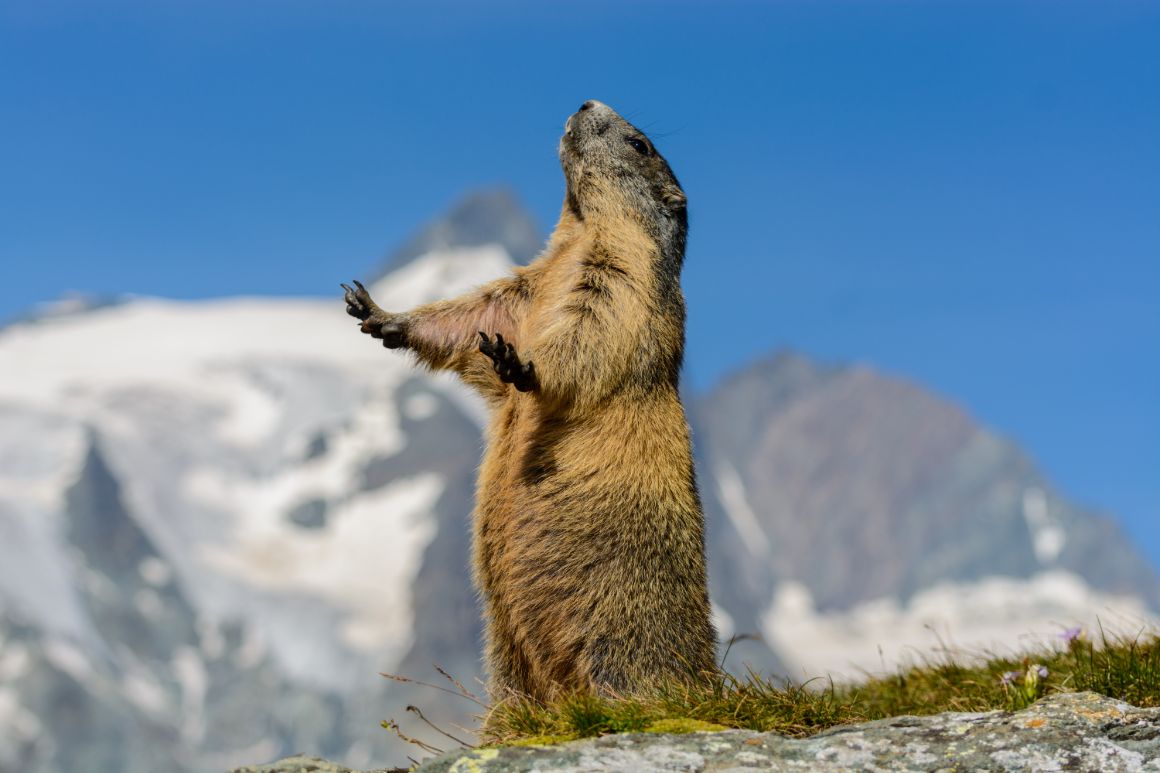

And for transparency’s sake, please know that some of the links in our content are affiliate links. That means that if you book your accommodation, buy your gear, or sort your insurance through our link, we earn a small commission (at no extra cost to you). That said, we only link to the gear we trust and never recommend services we don’t believe are up to scratch. Again, thank you!




